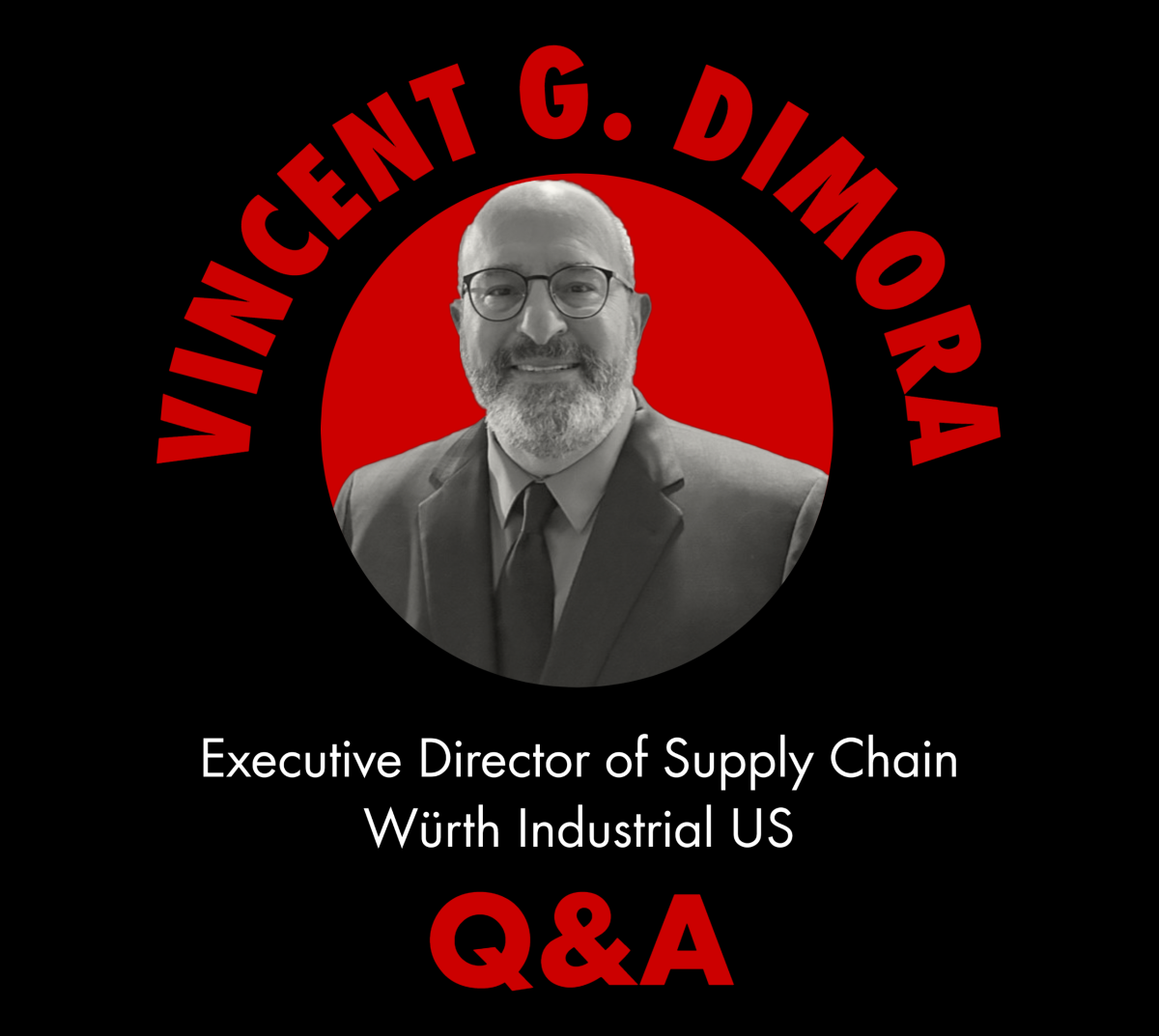Vincent G. Dimora, Executive Director of Supply Chain, Würth Industrial US, has worked in manufacturing, distribution, and Class-C VMI Industrial Markets for over 25 years. Ten of those years were spent at Würth in various roles such as Supply Chain Management, Operations Management, Regional Management, and Globalization.
Read on to see his answers to questions from our social media audience about supply chain management, industrial product sourcing, and more.

Q. What kind of changes have you seen in the supply chain since the height of the pandemic? How have those changes impacted the business?
A. Great question! There have been quite a few changes, but an area I’d like to focus on are lead times. While they have improved some, they are still longer than they were a couple of years ago which makes it difficult for planning purposes. There are a few schools of thought for solutions, such as putting more inventory into stock to improve service to our end users, but then there’s quite an inventory bubble to burn through over time at inflated costs, not to mention potential for excess & obsolete material in some instances. Another is spreading out the spend among various suppliers to minimize risk, but there are cost factors to consider and if parts are “PPAP’d” this limits us.
We’ve found that meeting and working closer with our current supply partners while also developing new ones in parallel has added to improved results. Providing more forward-looking usage gives our suppliers better ability to plan in advance for improved service overall. In some instances where customers have the appetite, we have actually worked on blended supply whereby some of the spend is allocated to domestic and global suppliers combined which lessens the risk, while enjoying blended total cost options.
Q. What is the best approach to balancing sourcing decisions around domestic vs. globalization?
A. There are many factors to consider in the total cost of ownership calculation domestic vs. globalization. Some key elements to consider when making these decisions are estimated annual usage, customer commitment to inventory, product category, part complexity, lead time, freight, and customs and duty to name a few.
Q. What are some of the strategic sourcing strategies in place to evaluate emerging regions and evaluating existing suppliers?
A. Our Supply Chain Team is constantly researching viable sources while working closely with other Würth entities to share and expand our supplier network along with supplier consolidation to leverage our spend. In addition, we have an extensive network of global Supplier Quality Engineers who audit these suppliers and then classify them based on the score results helping us to determine supplier feasibility.
Q. How do you create the right supply chain management culture to best achieve your goals?
A. Effective communication is key from a leadership perspective. It’s important to share our goals and objectives, but also a roadmap to achieve desired results. If the team can understand our direction and we give them the proper tools and training to help make them more effective, then their jobs are easier and it’s a WIN for everyone, which we can celebrate!
Q. When was the last time you visited your top suppliers and conducted a strategic work out session?
A. In early February I visited one of our key manufacturers that recently started up a new production facility. I was really impressed by the significant investment they’ve made to improve production capacity, from which we and our customers will definitely benefit. During this session we also reviewed future forecasts and how we could better align the needs of each company.
Q. What’s the best approach to improving fill rates during these challenging times of supply and demand?
A. Most important is customer forecast. If we are driving to customer needs, we could compare actual consumption vs. forecast, then determine how accurate is the information provided, and we can adjust ordering, stocking, and system settings to better accommodate their needs. Sharing this forecast information with our suppliers allows them to plan better and minimizes product fluidity gaps in supply.
Q. I’m sure you’re familiar with the concept of the Iron Triangle (Speed, Cost, Quality) and you can only pick two. Which two options do you feel are most important and why?
The old adage of quality first, safety always leads to the first part of my answer. Quality rules…Which leaves speed and cost. These two remaining questions speed or cost are always part of the commercial discussion.So which is the right answer between speed and cost?
I’m of the opinion, most if not all instances the three cannot be perfectly achieved at the same time consistently. There are always constraints. If a benchmark is established then there is a goal to work toward. However, there are always varying scenarios #1 being specific customer needs followed by product requirements and supply & demand (capacity) to name a few.
From a Supply Chain perspective quality, then cost, but there are many exceptions between cost and speed given specific situations considering needs of the customer as first priority.
Q. What are your three favorite elements of your job?
A. Our customers, employees, and supply partners make my job a new challenge each day which inspires me to do better while connecting with others locally and globally. This has helped me find new and innovative ways to continuously improve while enjoying others’ perspectives.
Würth culture is being part of a family owned global business with values (aligned similar to mine) who truly appreciate their employees, which motivates me even more. For me this is paramount. The Würth name also gives us an advantage through brand recognition and financial strength which helps provide the necessary tools to do my job effectively.
Since being part of Würth Industrial US I have grown in various positions over these past 10 years and I am grateful for all of these opportunities.
